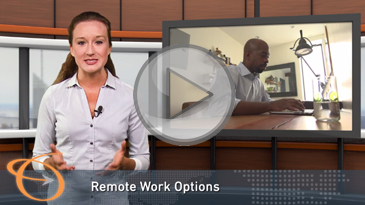Recently, some large companies have curtailed the ability of their employees to work from home, now asking staff to work in corporate offices. These changes are focused on driving increased collaboration, creativity, mentoring and innovation, but may alienate top talent in the executive, managerial and professional labor market – a sector that has been candidate-driven and challenged by talent shortages for the last few years.
This move comes at a time when many candidates express interest in working from home during the interview process. According to the MRINetwork 2017 Recruiter Sentiment Study, 68 percent of recruiters and 53 percent of employers state candidates ask for work from home options somewhat often to very often. Over half of candidates indicate that having a work from home option is somewhat to extremely important as they consider a new job.
“The U.S. unemployment rate is at a 16-year low, so failing to provide work from home options can put companies at a disadvantage in terms of attracting candidates,” observes Nancy Halverson, general manager, franchise operations for MRINetwork. “Technology has made communication, collaboration, security and other aspects of managing remote employee easier, allowing companies to implement this strategy as a way to attract and retain top talent.”
Halverson notes that work from home arrangements offer a number of significant advantages. “You can employ specialized people who live outside your geographic region, for example, and stay operational 24/7 with remote staff spread across different time zones,” she says. “You are also likely to maintain a more productive workforce and achieve higher long-term retention rates.”
The key to implementing a successful work from home program, Halverson advises, is the formation of a well-thought-out plan. “This necessitates drawing up formal guidelines and finding the right technological tools, as well as hiring the right people for the job of working remotely,” she says. “Once in place, the program requires oversight and tweaking to make it’s sustainable and successful.”
Halverson offers some useful guidelines for managing telecommuters on a day-to-day basis:
Set the right tone. Working from home has become more acceptable, and even desirable, to employers, so it should no longer be viewed as a reward or a privilege. Instead, you should treat it as a natural option for working. Set the expectation that remote working days are the same as in-office working days. Agree on goals and deadlines for particular tasks. Keep a close eye on how well the targets are being met and give feedback promptly and sensitively if things go wrong.
Determine metrics to measure progress. Monitoring and assessing the performance of people who work at home is perhaps the most significant managerial challenge. It can be helpful to measure their effectiveness in terms of their output rather than the hours they work to ensure that targets and deadlines are being met. You can set firm deliverables for work-from-home days (tangible pieces of work you can see have been completed), for example, or use time-tracking software.
Don’t forget about remote workers. Don’t just shoot off emails requesting updates on projects. Make informal calls to ask how things are going, allowing employees to express concerns and to feel appreciated and acknowledged. Take advantage of instant messaging and make sure that face-to-face meetings occur when possible or when needed. For times when it’s not possible to meet in person, video conferencing or Skype are great ways to provide a face-to-face element to brainstorming sessions or team meetings. These types of capabilities can make all the difference in helping remote employees see their co-workers occasionally, so that they feel connected and part of a community.
To further the feeling of community, treat remote workers the same as you do those in the office. If it’s ugly sweater day during the holidays, encourage your remote person to do the same and send a picture or leverage that video technology again. If you let parents scoot out early to enjoy Halloween festivities with their little ones, allow the same privileges to remote workers.
Pay attention to warning signs. If a remote worker is missing deadlines or being asked to redo work, there could be a communication problem. Meet with the worker to discuss what communication channels could be used to correct the situation or if working from home is not the best option for the individual. Keep in mind that it doesn’t always work out for everyone.
Halverson believes that one of the biggest concerns of having virtual teams is that employees may feel their contributions aren’t noticed or valued. “You don’t want team members to feel as though they’re just sending their work out into a vacuum,” she cautions. “As a leader, you have to create a sense of involvement and inclusion so that your people don’t feel invisible.”
Editorial Contact
Nysha King
Media Relations
Office: 215.282.8821
Email: nysha.king@mrinetwork.com


Connect with MRINetwork